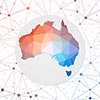Fixed Income
Emerging market fixed income quarterly
Emerging Markets (EM) debt began 2021 by consolidating after an exceptional performance at the end of 2020. The negative performance was mostly driven by a widening of US Treasury yields while spreads remained broadly unchanged.
Global credit quarterly
The global credit market saw a positive start into the year in Q12021 as spreads continued to tighten. However, total returns were negatively impacted by the global move toward higher rates. At the beginning of 2021, cyclical sectors came back to the forefront and outperformed. Energy and automotive sectors were among the winners, while utilities lagged the rally.
Asian Fixed Income Monthly - March 2021
The UST yield curve steepened further in March as stronger-than-expected domestic economic data prints, passage of the US dollar (USD) 1.9 trillion stimulus package and a ramp-up in the rate of US vaccinations amid slowing daily infection rates prompted investors to increasingly price in accelerating growth in the coming quarters.
Following a tumultuous 2020 marked by the COVID-19 pandemic, global growth in 2021 is expected to improve on the back of positive vaccine developments and continued government measures. However, the pace of recovery is likely to be uneven among economies and fears of a resurgence of COVID-19 linger. It would be presumptuous to say that we are finally out of the woods.
Asian Fixed Income Monthly - February 2021
The potential return of long-muted inflation sparked a meaningful jump in US Treasury (UST) yields in February. Fears of rising price pressures were prompted by the combination of robust domestic data, positive development on the COVID-19 vaccine front and an anticipated increase in US federal spending. Overall, 2-year and 10-year yields ended the month at 0.13% and 1.41%, respectively, about 1.9 basis points (bps) and 34 bps higher compared to end-January.
Australian Fixed Income Monthly – February 2021
The Australian bond market (as measured by the Bloomberg AusBond Composite 0+ Yr Index) returned -3.58% over the month. The yield curve steepened dramatically as 3-year government bond yields ended the month 1 basis point (bp) higher at 0.12%, while 10-year government bond yields spiked by 79 basis points (bps) to 1.92%. Short-term bank bill rates were marginally higher.
Asian Fixed Income Monthly - January 2021
The US Treasury (UST) yield curve steepened in January. The prospect of increased federal spending in the US prompted a sharp upward move in UST yields at the start of the year.
Australian Fixed Income Monthly – January 2021
The Australian bond market (as measured by the Bloomberg AusBond Composite 0+ Yr Index) returned -0.42% over the month. The yield curve steepened as 3-year government bond yields ended the month flat at 0.11%, while 10-year government bond yields rose by 16 basis points (bps) to 1.13%. Short-term bank bill rates were unchanged.
Australian Fixed Income Monthly – December 2020
The Australian bond market (as measured by the Bloomberg AusBond Composite 0+ Yr Index) returned -0.27% over the month. The yield curve steepened as 3-year government bond yields ended the month flat at 0.11%, while 10-year government bond yields rose by 7 basis points (bps) to 0.97%. Short-term bank bill rates were largely unchanged.
Asian Fixed Income Monthly - December 2020
The US Treasury (UST) yield curve steepened slightly in December. The UST 10-year bond yield rose 7.5 basis points (bps) to 0.915%, while the 2-year bond yield fell by 2.7 bps to 0.122%. Concerns in the month revolved around rising COVID-19 cases in Europe, particularly in the UK, and over the uncertainty of fiscal stimulus in the US.
2021 Core Markets Fixed Income Outlook
As European Commission President Ursla von der Leyen announced the free trade agreement with the UK and the EU, she quoted T.S. Eliot: “What we call the beginning is often the end. And to make an end is to make a beginning. The end is where we start from.” Well, with the end of 2020 we certainly have a new year to look forward to, but it feels we are more like in the middle of this unsettled time than at an end.
2021 Emerging Markets Fixed Income Outlook
Despite the devastating human and economic toll caused by the COVID-19 pandemic across the globe, and in many emerging economies in particular, emerging market debt investors were rewarded with positive returns in 2020, with local currency, external sovereign and corporate bond indices posting returns in excess of 2.5%, 5% and 7%, respectively.
2021 New Zealand Fixed Income Outlook
We can head into 2021 with New Zealand the envy of many. But it remains to be seen how long this euphoria will last. Agriculture and horticulture are both promising, and the technology sector has been touted as the next big thing, but without a new major driver of growth, there’s no guarantee that our economic reality will match our ambition. Leveraging New Zealand’s exposure to fast growing economies such as China remains an important economic recovery strategy. But our greatest hope for emerging successfully from this period of wider “confidence slump” is that the low and plentiful cash stimulates risk taking and stimulates the economy, propelling New Zealand into its next phase of prosperity.
2021 Asian Fixed Income and FX Outlook
We expect North Asia to continue to lead the region’s recovery (at least in the first half of the year). But we also expect the growth divergence between North Asia and the rest of the region to narrow. Unprecedented fiscal support from governments have been pivotal to the ongoing recovery. We expect fiscal action to continue in the coming year but anticipate renewed private sector confidence as the vaccine becomes broadly available and provides a powerful tailwind to regional growth.
2021 Asia Credit Outlook
We expect Asian credit spreads will tighten gradually over the coming months, supported by a solid rebound in gross domestic product (GDP) growth for most Asian economies in 2021 and stable to slightly better corporate credit fundamentals.
Global Investment Committee Outlook: Especially buoyant non-US equities
Although some on the committee agreed with the market consensus for a moderate continuation of economic growth and equity markets, and a few were even more cautious, especially regarding increased fears of inflation later in 2021, the majority agreed with a more positive scenario in which the global economy outperforms market consensus, while equities, especially those outside of the US, rally sharply.
Asian Fixed Income Monthly - November 2020
The US Treasury (UST) yield curve flattened in November. Risk markets rallied after the US presidential election. Investor confidence was lifted following positive trial results of a COVID-19 vaccine. Yields subsequently retracted part of their earlier rise on news of soaring COVID-19 infection rates in the US and Europe and near-term downside risks to the economy.
Australian Fixed Income Monthly – November 2020
The Australian bond market (as measured by the Bloomberg AusBond Composite 0+ Yr Index) returned -0.11% over the month. The yield curve steepened as 3-year government bond yields ended the month 1 basis point (bp) lower at 0.11%, while 10-year government bond yields rose by 7 bps to 0.90%.
Developed markets fixed income quarterly (Q4 2020 outlook)
US Treasury (UST) yields rose in October. The US presidential election and the fiscal stimulus deal were the focal points of news headlines and markets in October. Worries about the acceleration of COVID-19 cases in the US and Western Europe, and renewed lockdowns in the latter, partially offset the upward pressure. Overall, 2-year yields ended 2.6 basis points (bps) higher at 0.155%, while 10-year yields rose 19.0 bps to 0.875%.
Asian Fixed Income Monthly - October 2020
US Treasury (UST) yields rose in October. The US presidential election and the fiscal stimulus deal were the focal points of news headlines and markets in October. Worries about the acceleration of COVID-19 cases in the US and Western Europe, and renewed lockdowns in the latter, partially offset the upward pressure. Overall, 2-year yields ended 2.6 basis points (bps) higher at 0.155%, while 10-year yields rose 19.0 bps to 0.875%.




















